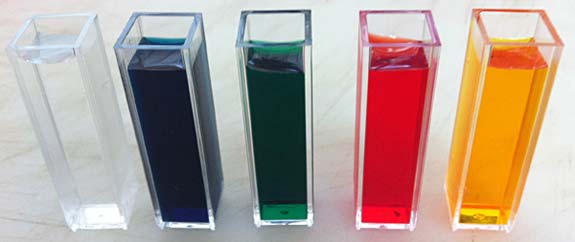
Shedding Light on UV-Vis Cuvettes with Types, Uses, and Maintenance
Ultraviolet-visible (UV-Vis) cuvettes are an essential component of many laboratory experiments. These optical sample cells allow researchers to measure the absorption of light by a sample solution in a reproducible and cost-effective manner. In this article, we will delve deeper into the different types of a UV Vis cuvette, their uses, advantages, disadvantages, and the proper care and maintenance of these cuvettes.
Definition of UV-Vis Cuvettes
UV-Vis cuvettes are sample cells used in UV-Vis spectroscopy experiments to measure the absorbance of light by a sample solution. They consist of two transparent, parallel walls that are sealed with an optical path between them. This optical path can be filled with either liquid or gas samples and then exposed to UV-Vis light.
Types of UV-Vis Cuvettes
The type of cuvette used in UV-Vis spectroscopy is an important factor that affects the accuracy of the measurements. Two common types of cuvettes used in UV-Vis spectroscopy experiments are quartz cuvettes and plastic cuvettes.
Quartz Cuvettes
Quartz cuvettes are made from transparent quartz glass, making them highly reliable for UV-Vis spectroscopy. Quartz cuvettes have excellent optical qualities that allow for maximum transmittance and minimal light scattering – up to 96%. This makes quartz ideal for measuring low concentrations and short path lengths (up to 10mm). As quartz is a fragile material, these types of cuvettes require careful handling in order to avoid cracks or chips that could interfere with the readings.
Plastic Cuvettes
Plastic cuvettes are less expensive than quartz ones and are more resistant to physical damage as they do not crack or chip easily. They also offer a wide range of optical qualities due to their ability to be molded into different shapes with varying wall thicknesses. Plastic cuvettes typically have transmittance values ranging from 90% – 95%, making them suitable for measuring high concentrations over long path lengths.

Uses of UV-Vis Cuvettes
UV-Vis cuvettes are essential pieces of laboratory equipment used to measure the absorbance of light by a sample. This type of cuvette is a relatively simple device consisting of two transparent, parallel walls that are sealed with an optical path between them. The results obtained from these measurements can provide valuable information about the chemical composition and structure of a sample, as well as its interaction with light.
The most common use for UV-Vis cuvette is in spectroscopy, which is the study of how different substances interact with electromagnetic radiation like visible light and ultraviolet light. Through spectroscopic analysis, scientists can determine the identity and concentration of various components in a sample by measuring how much it absorbs or reflects at certain wavelengths. By using UV-Vis cuvettes to measure absorbance at different wavelengths, researchers can identify particular compounds in their samples and monitor changes over time as reactions occur or concentrations change during experiments.
UV-Vis cuvettes are also commonly used for other types of applications such as fluorescence measurements and chromatography experiments. In fluorescence measurements, scientists use special fluorescent dyes to probe molecules or study enzymatic activity. Chromatography experiments involve separating mixtures into their individual components and then measuring their absorbance at different wavelengths.
With a solid foundation in technology, backed by a BIT degree, Lucas Noah has carved a niche for himself in the world of content creation and digital storytelling. Currently lending his expertise to Creative Outrank LLC and Oceana Express LLC, Lucas has become a... Read more